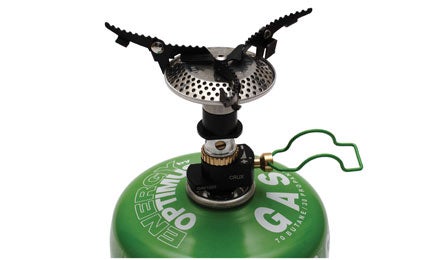Heading out the door? Read this article on the new Outside+ app available now on iOS devices for members! Download the app.
This is Ask a Thru-Hiker, where record-setting long-distance hiker Liz “Snorkel” Thomas answers your questions about life on the trail.
Dear Snorkel,
I keep hearing other thru-hikers talk about how excited they are to see what’s in the “hiker box.” I didn’t even know hikers came in boxes! But seriously: What is a hiker box and why are people so into it?
Thinking Out of the Box
Dear Thinking,
The hiker box is the “take a penny, leave a penny” of the thru-hiker world. It’s a place where hikers can put gear, food, and supplies that they no longer need, and other hikers can pick up free things that might come in handy. It’s a way to share the bounty with fellow hikers. For a hiker in need, it’s the ultimate symbol of the thru-hiker motto “the trail provides.”
For backpackers focused on weight, a hiker box can be a way to dispose of unnecessary ounces and pounds from the pack while knowing it will go to good use. But on a thru-hike, being a “hiker in need” isn’t reserved for those trying to do the trail on the cheap. No matter how well-off you may be in the “real world,” if gear breaks when you’re in the middle of nowhere, you’re at the mercy of your gear repair skills and fellow hikers.
On some trails, you may need to hike hundreds of miles before you reach a trail town with a gear store. Similarly, if a resupply box doesn’t arrive on time—or at all—to a remote location, you may be without food for the next section. A hiker box can be a way to solve a hiker’s problems, at least temporarily, until you can get to a town with the supplies you need.

I myself have been saved by the hiker box, sometimes miraculously. When I was hiking the Pacific Crest Trail, the nights became cold in northern Washington. I knew I needed a warmer sleeping pad, but the remaining trail towns between me and the terminus were too small for a gear store. It would’ve taken half a day off my already tight schedule to hitchhike to the closest town with an outfitter. Luckily, I found an insulated inflatable sleeping pad in the hiker box. It was just what I needed to be warm during the last few snowy nights near the Canadian border.
You can find hiker boxes in most trail towns or trailside resorts, even ones too small for a grocery store like Pie Town, New Mexico on the CDT; hikers can still send packages to the post office or a trail angel’s house and often leave unneeded items behind. Similarly, trailside resorts like Big Sandy Lodge in the Wind River Range of the CDT may have a restaurant, but you’d be hard-pressed to resupply there. Luckily, many of those resorts hold resupply packages for a fee, allowing thru-hikers access to supplies in a remote location.
Food is the most common find in a hiker box: Many hikers send themselves too much food in a resupply box (or no longer have an appetite for the food they sent themselves). Another common find are still-usable hiking shoes, left behind by hikers who have switched in search of a more comfortable model or size; you may be able to get hundreds of miles out of even a gently-used pair.
It’s worth noting that it’s up to hikers—not trail angels or postmasters—to keep the hiker box tidy. As may be expected from discards, hiker boxes often don’t have the best stuff: Hikers are ravenous and usually not too discriminating when it comes to food, so the stuff they leave behind is often extremely suspect (think baggies of mystery powder). Half-full fuel canisters can be a great find, but empty ones crowd out space in the hiker box. Too often, you’ll find shoes with holes and no more miles left to give. Even that sleeping pad I found in northern Washington had a hole (luckily, I was able to repair it).
At their best, though, hiker boxes are a place of good trail karma. One easy way thru-hikers can give back to their community and show thanks to businesses that host hiker boxes is to clean the hiker box. You never know who could be watching your good deeds on trail.
Case in point: Back in late September 2014, after the American Long Distance Hiking Association-West Annual Gathering, I was having lunch with the President of Gossamer Gear at a popular food truck, near where the trail crosses I-90. As we ate, we watched two thru-hikers systematically clean out a hiker box that had accumulated a season’s worth of crumbs, hiker funk, and busted gear. When the hikers were finished cleaning, to my surprise, my lunch companion thanked them for their service to the hiker community by offering to send them a free backpack to replace their trail-worn bags. It’s just another example that when it comes to thru-hiking, what goes around comes around.
—Snorkel
